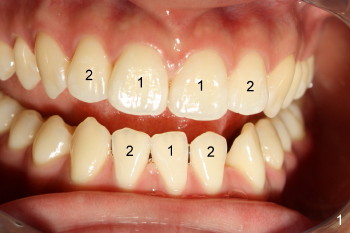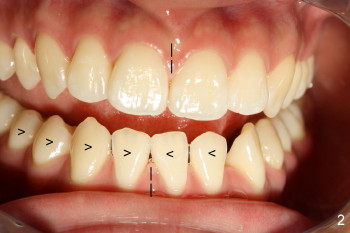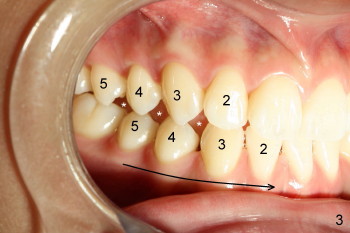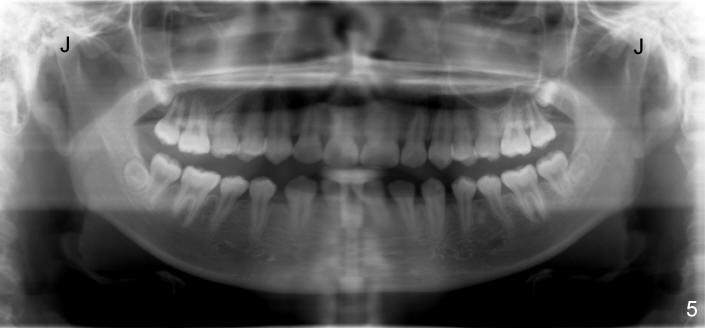




 |
 |
 |
 |
 |
|
Crooked Teeth and TMJ Problem
Kathy is 17 years old. She has had TMJ pain for several years. The main reason for the pain is that she has crooked teeth. First of all, there is a missing tooth in her bottom front. We have four front teeth on the top and the bottom. Kathy has four front teeth on the top (Fig.1: 2112), but three on the bottom (212).
Our top and bottom midlines should be on the same line, but Kathy's are not (Fig.2 dashed lines). So there are a lot of shifts among the bottom teeth (arrowheads).
The shifts on the right side (our left-handed side) also involve the back teeth on the bottom (Fig.3: 4 and 5; long arrow). There are several of spaces between top and bottom teeth (*). This is not normal. It is not good for chewing.
The tooth alignment in the back on the left side (Fig.4) is more or less normal. The top and bottom teeth are inter-digital. It is more efficient for chewing. Kathy chews mostly on the left side.
Alignment of our teeth is related to our TMJs (temporomandibular joints, jaw joints, J in Fig.5). TMJs are the most unusual joints in our body. The only joints are joined together right and left by a bone in the middle. When our teeth are crooked, our TMJs are messed up. For example, when Kathy chews more on the left side, two TMJs have wear and tear unevenly, ultimately leading to TMJ pain. Braces fix crooked teeth and most likely improve TMJ problems.
Xin Wei, DDS, PhD, MS 1st edition 04/29/2012, last revision 04/29/2012